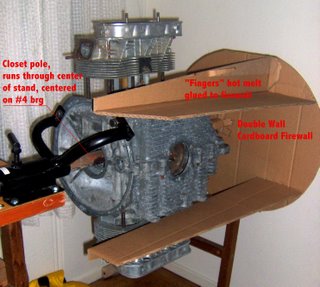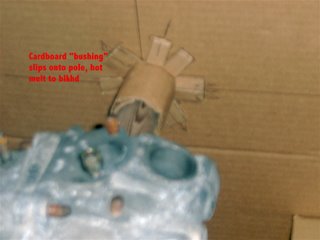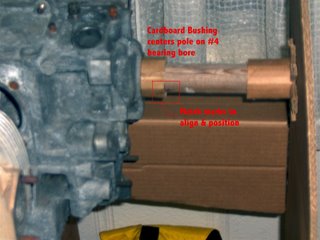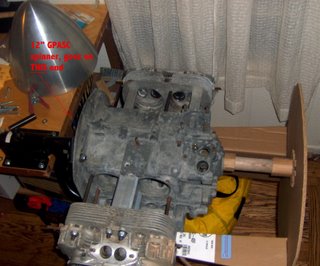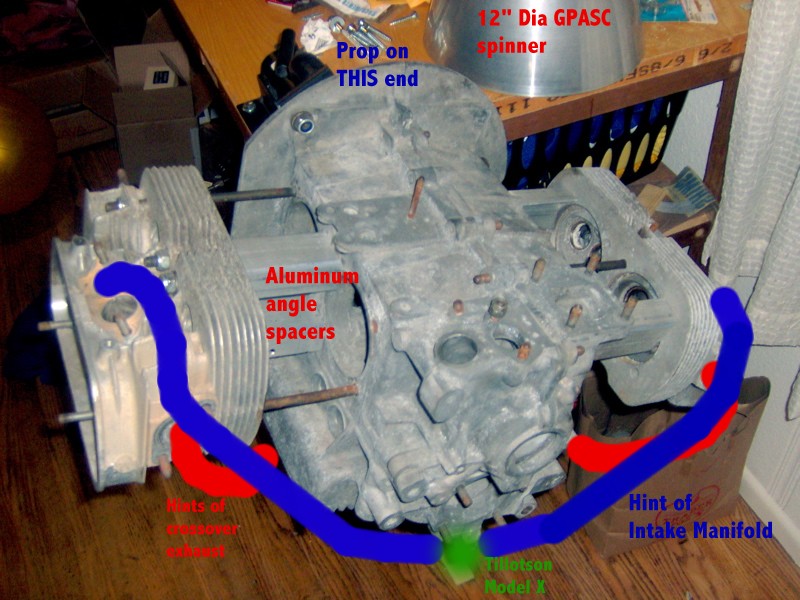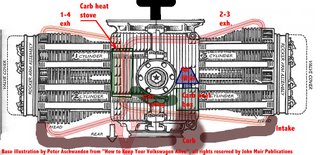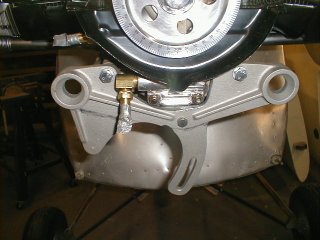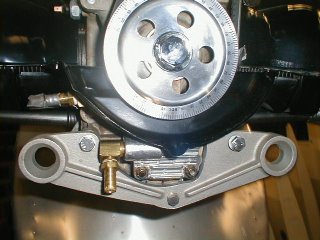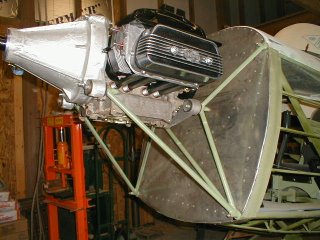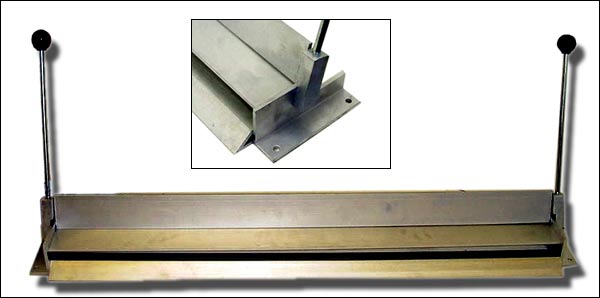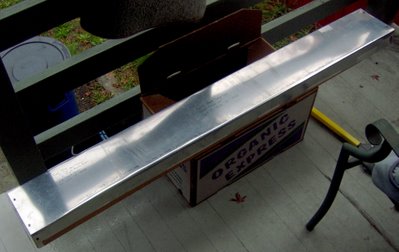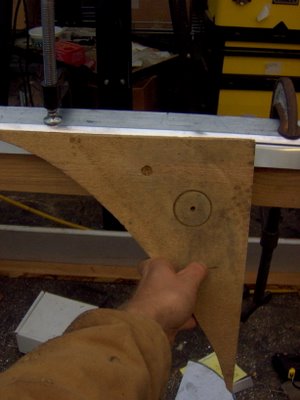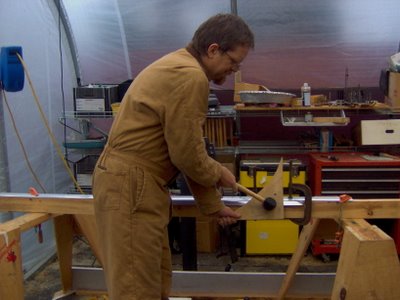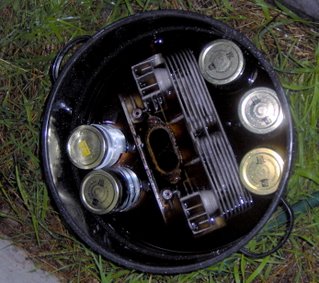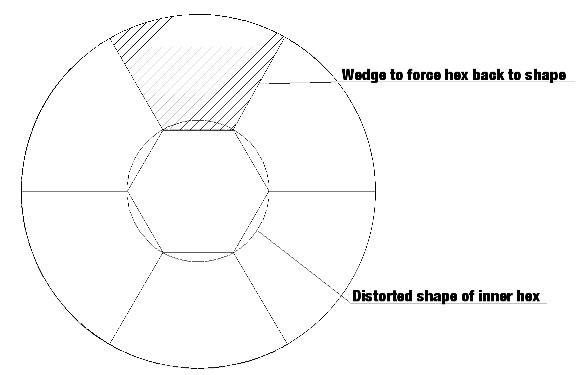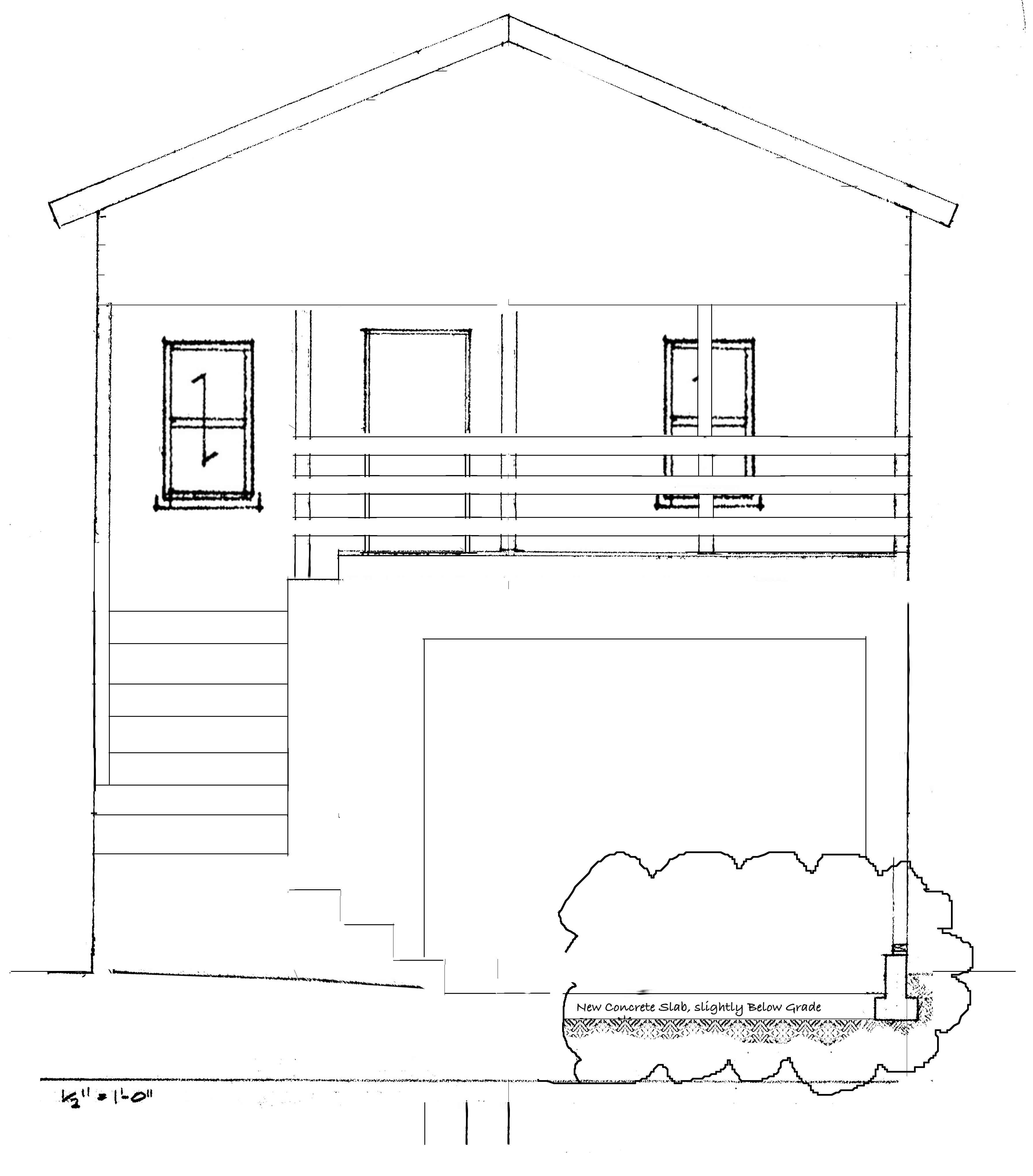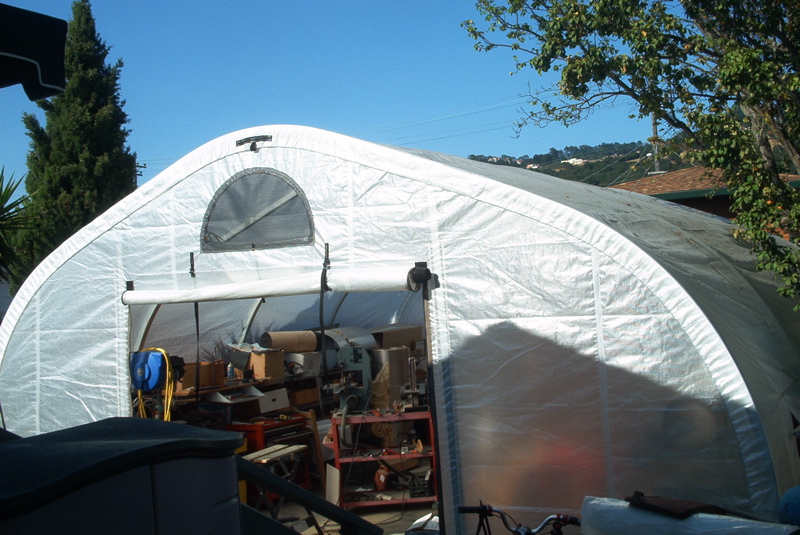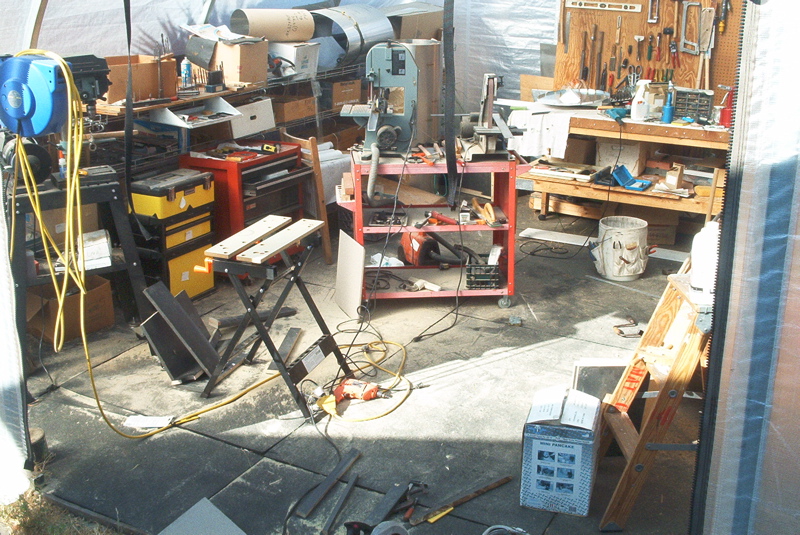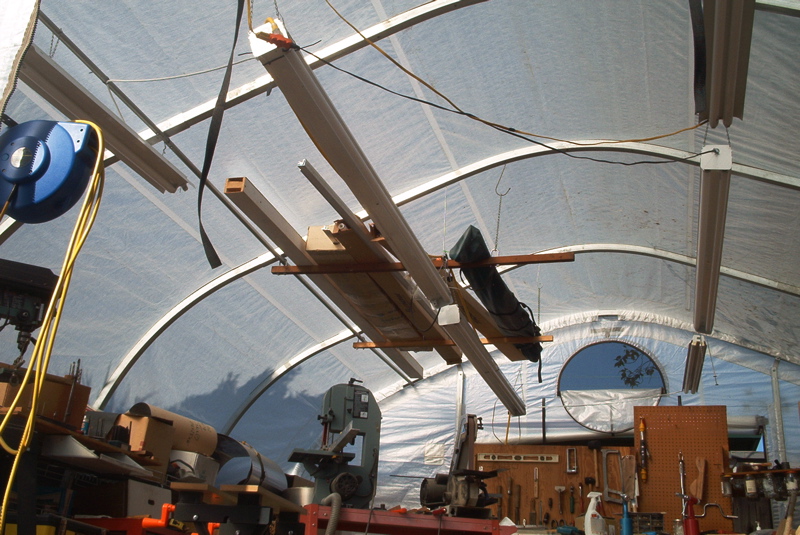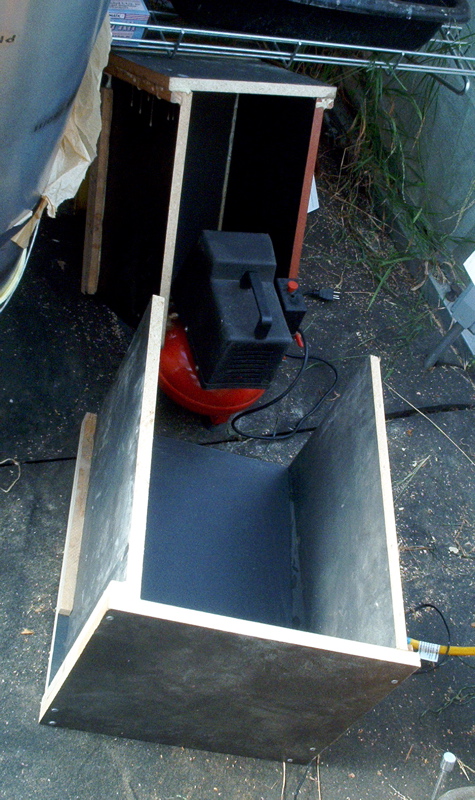Fuel Systems, AN fittings, NPT fittings, and their discontents

Follow this link, and scroll down a bit within it to read about a Zenair 601 with Corvair Power and it's fuel system at www.FlyCorvair.com
I've purchased, read & digested William Wynne's books, both the Corvair conversion manual, and the relatively new ZenVair installation manual. He's made a pretty convincing case for the things he does by laying it down WHY he does things, and if you follow his site you can see the OTHER things he's tried.
Please examine the adjacent image, from the same web pace linked above. This is one of the cleanest fuel systems I've ever seen on an experimental, and I'd like to emulate it if I can on my airplane.
Let's follow this scheme from the firewall out. The AN bulkhead elbow (light blue anodized, AN833-6) is attached to a hand made "outie belly button" piece that spaces the deal far enough away from the firewall to hang the gascolator nice, and link up with the inlet to the primary Facet fuel pump. Later versions use a welded "firwall pass through", and you can buy this part from http://flycorvair.com.
A female-to-female straight union attaches the Andair gascolator which has male AN-6 connections built in. A 90 deg union connects the first Facet pump FP-40108, which also has in-built male AN-6 connectors. Another straight union, another pump, and on to the carb via a fuel pressure sensor.
Now, I've got two pumps, but they are the much more common Facet FP-40105. Can I devise something that works as well with the parts I have in hand, and can pick up from my local, well stocked hardware store?
The short answer is "NO".
The LONG answer starts with these facts:
1) The fittings I'd really like don't exist in NPT (National Pipe Thread). This means using more fitting/joints, which means more potential for leaks, especially since:
2) NPT RELIES on sealant, as it is NOT inherently leak free by design. No matter how tight you graunch down on it, there is always a spiral leak path around the threads.
3) NPT fittings SUCK from a fatigue standpoint, for several reasons. The mechanical function of tightening the joint, and the sealing function (such as it is, see answer 2) above) are not separated, and so if the joint fails mechanically in ANY way, it also leaks, not good with fuel. But the threads are also for shit, with sharp roots. True AN fittings have a special thread form and tighter tolerances than the nearly identical JIC 37 degree flare fittings, which are already way better than the NPT threads on hardware store fittings.
4) Even in the smaller 1/8 inch nominal diameter, the brass hardware store fittings are heavy compared to the aluminum AN-6 fittings - I haven't checked yet, but they may actually be heavier.
Nevertheless, I'm going to carry on with this plan, at least conceptually, for the following reasons:
1) A VW sucks less fuel than a Corvair. AN-6 is overkill at 4 GPM max.
2) I suspect I'll have to do a lot of experimentation to get my fuel system to fit, see the adjacent view of my firewall. I don't have a lot of real estate, and I may have to run the fuel pumps along the engine mount beds.
3) The disadvantages of NPT fittings can be mitigated by NOT relying on them to support the gascolator, and by using Loctite Pipe Sealant.
So, my system, assume the same geometric layout, will require a 1/4" NPT bulkhead fitting, used in boat fuel systems, a 90 deg male-to-male elbow, a 1/4" female-to-female union, a 1/4" hex nipple, a Great Plain gascolator (the gascolator will be supported by a bracket, and NOT the NPT threads), another male-to-male elbow, another union, a reducing bushing, a 1/8" hex nipple, the first fuel pump, a 1/8" hex nipple, union, nipple, fuel pump, then off to the carb.
This fuel pump to carb transition bears examination. William Wynne uses an Earls AN-6 fitting with a 120 degree bend, connecting to HOSE, to deal with the vibration between engine and firewall. Nothing like this exists for 1/8" NPT, so I think I'll have to form something up using a NPT to 45 degree flare fitting, a suitable length ALUMINUM tubing with hose slipped over the ends of this and double clamped. Before you sneer, the HIGH pressure (70+ psi) fuel lines on our Volvo 164 used hose over straight pipe without a barb or a bead.
What I see as the VITAL points of William Wynne's system for a low wing aircraft, what I'm trying to retain: redundant fuel pumps, and no pressurized fuel in the cockpit.
UPDATE: The proceeding discussion can be viewed as an example of my thought process, or perhaps of the sort of mental masturbation first time builders with too much time on their hands, but not enough energy to go out to the shop, and, you know, BUILD anything, go through. The comment posters have convinced me AN fittings are the Way and the Light; the scales have fallen from my eye, and I BELIEVE. Amen.
Labels: Fuel System, Project
